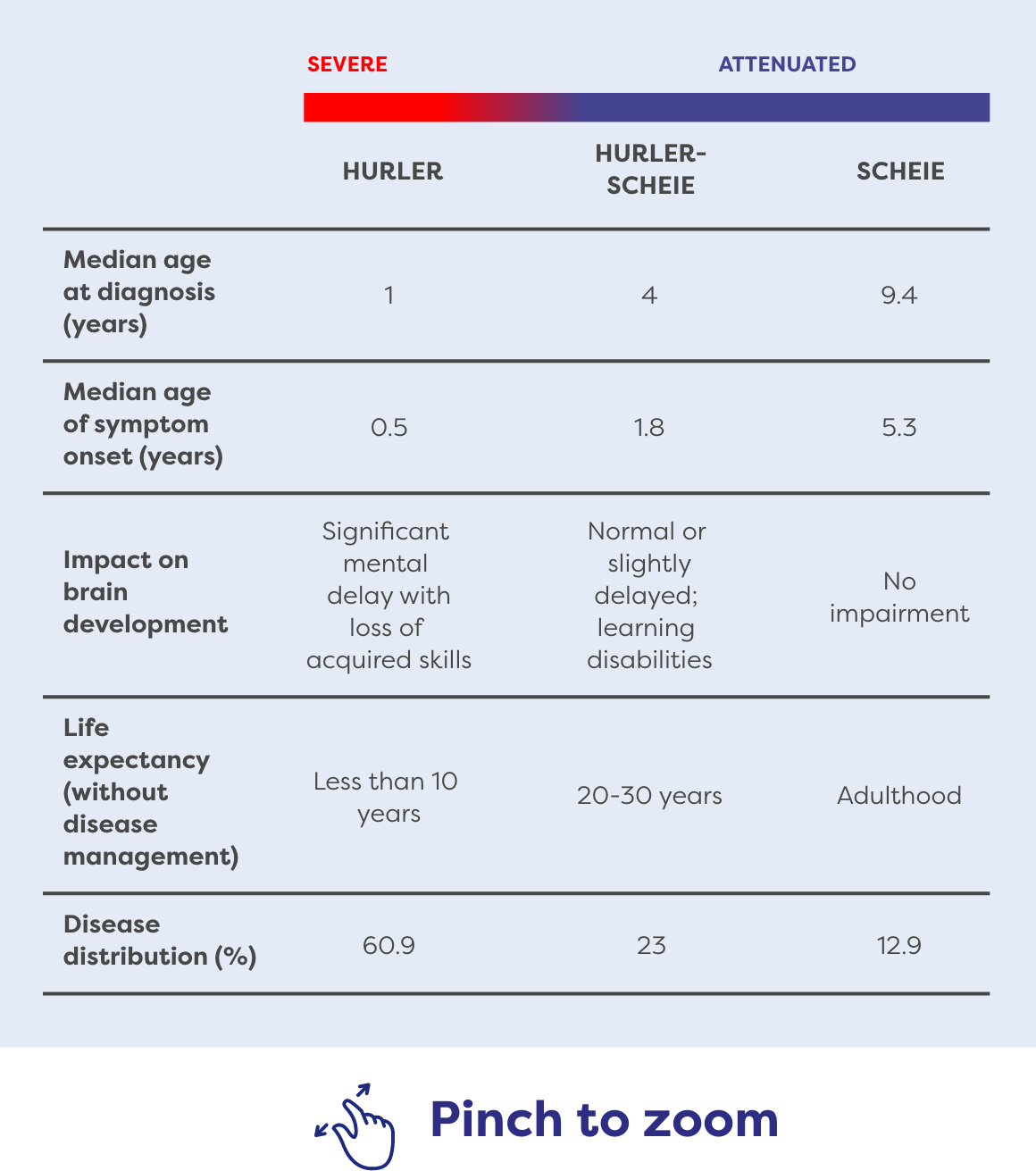TYPES OF MPS I
MPS I has a wide spectrum of presentation
There is a great deal of difference in how the disease impacts a person among people with MPS I, so it is useful to think of MPS I existing on a sliding scale. The condition of a person with MPS I lies on a spectrum.
People with MPS I are described as having either a severe form (Hurler syndrome) or attenuated form (Hurler-Scheie or Scheie syndrome) based on the age of onset, the severity of symptoms, rate of disease progression, and whether there is any early and direct involvement of the brain. You, your child, or someone you care about may sit anywhere in between.

“Hurler syndrome” is named after the doctor who first discovered it. People who experience it have symptoms that advance fast, issues with the brain, heart disease, respiratory problems, enlarged liver and spleen, and have shortened lifespan.
“Scheie syndrome” is an attenuated (less severe) form of MPS I. People with this condition present with slower disease advancement, no brain damage, and a longer lifespan (into adulthood) compared to Hurler.
People who are in between the Hurler and Scheie types are put into "Hurler-Scheie syndrome.” These people have symptoms that advance faster than Scheie but slower than Hurler and experience normal or slightly brain development delay. The symptom severity and lifespan for this type is between that of Hurler and Scheie.
MPS I Disease Spectrum
.png)
MPS I, mucopolysaccharidosis type I.